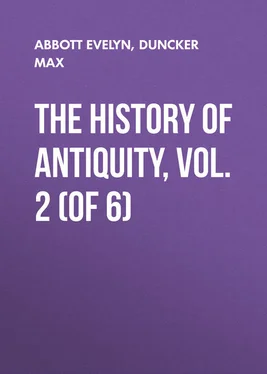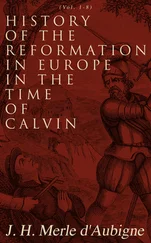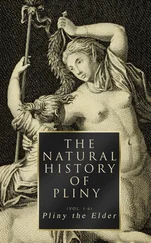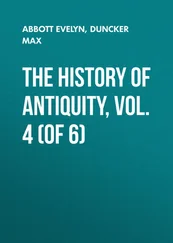Evelyn Abbott - The History of Antiquity, Vol. 2 (of 6)
Здесь есть возможность читать онлайн «Evelyn Abbott - The History of Antiquity, Vol. 2 (of 6)» — ознакомительный отрывок электронной книги совершенно бесплатно, а после прочтения отрывка купить полную версию. В некоторых случаях можно слушать аудио, скачать через торрент в формате fb2 и присутствует краткое содержание. Жанр: foreign_antique, foreign_prose, Историческая проза, на английском языке. Описание произведения, (предисловие) а так же отзывы посетителей доступны на портале библиотеки ЛибКат.
- Название:The History of Antiquity, Vol. 2 (of 6)
- Автор:
- Жанр:
- Год:неизвестен
- ISBN:нет данных
- Рейтинг книги:4 / 5. Голосов: 1
-
Избранное:Добавить в избранное
- Отзывы:
-
Ваша оценка:
- 80
- 1
- 2
- 3
- 4
- 5
The History of Antiquity, Vol. 2 (of 6): краткое содержание, описание и аннотация
Предлагаем к чтению аннотацию, описание, краткое содержание или предисловие (зависит от того, что написал сам автор книги «The History of Antiquity, Vol. 2 (of 6)»). Если вы не нашли необходимую информацию о книге — напишите в комментариях, мы постараемся отыскать её.
The History of Antiquity, Vol. 2 (of 6) — читать онлайн ознакомительный отрывок
Ниже представлен текст книги, разбитый по страницам. Система сохранения места последней прочитанной страницы, позволяет с удобством читать онлайн бесплатно книгу «The History of Antiquity, Vol. 2 (of 6)», без необходимости каждый раз заново искать на чём Вы остановились. Поставьте закладку, и сможете в любой момент перейти на страницу, на которой закончили чтение.
Интервал:
Закладка:
These are the beginnings of the Assyrian kingdom according to the indications of the monuments. After the series of kings from Assur-bil-nisi to Tiglath Adar, whose dates come down from about the year 1460 to about 1280 B.C., there is a gap in our knowledge of some decades. After this we hear at first of new struggles with Babylon. In these Belkudurussur of Assyria (about 1220 B.C.) lost his life. The Babylonians, led by their king, Binpaliddin, invaded Assyria with a numerous army in order to take the city of Asshur. But Adarpalbitkur, the successor of Belkudurussur, succeeded in forcing them to retire to Babylon. 41 41 G. Smith, loc. cit. p. 250.
Of Adarpalbitkur his fourth successor proudly declares that "he was the protector of the might of Asshur, that he put an end to his weakness in his land, that he arranged well the army of the land of Assyria." 42 42 So the passage runs according to a communication from E. Schrader. On the reading Adarpalbitkur as against the readings Ninpalazira and Adarpalassar, see E. Schrader, "A. B. Keilinschriften," s. 152. On what Ménant ("Annal." p. 29) grounds the assumption that Belkudurussur was the immediate successor of Tiglath Adar I cannot say; it would not be chronologically impossible, but the synchronistic tablet merely informs us that Adarpalbitkur was the successor of Belkudurussur; G. Rawlinson, "Mon." 2, 49. Still less am I able to find any foundation for the statement that Binpaliddin of Babylon, the opponent of Belkudurussur and Adarpalbitkur, was a vassal-king set up by Assyria. The date of Tiglath Pilesar I. is fixed by the Bavian inscription, which tells us that Sennacherib at his second capture of Babylon brought back out of that city the images of the gods lost by Tiglath Pilesar 418 years previously (Bav. 43-50), at the period between 1130 and 1100 B.C. If he began to reign 1130, then the five kings before him (the series from Adarpalbitkur to Tiglath Pilesar is fixed by the cylinder of the latter), allowing 20 years to each reign, bring us to 1230 B.C. for the beginning of Belkudurussur. To go back further seems the more doubtful, as Tiglath Pilesar put Assur-dayan, the third prince of this series, only 60 years before his own time.
His son, Assur-dayan (about 1180 B.C.) was able to remove the war again into the land of Babylonia; he claims to have carried the booty from three places in Babylonia – Zab, Irriya and Agarsalu – to Assyria. 43 43 Sayce, "Records of the Past," 3, 31; Ménant, loc. cit. p. 31.
It was he who had carried away the ruins of the fallen temple which Samsi-Bin had built at Asshur to Anu and Bin, but had not erected it again. According to the words of his great-grandson, "he carried the exalted sceptre, and prospered the nation of Bel; the work of his hands and the gifts of his fingers pleased the great gods; he attained great age and long life." 44 44 Communication from E. Schrader.
Of Assur-dayan's son and successor, Mutakkil-Nebu (about 1160 B.C.), we only find that "Asshur, the great lord, raised him to the throne, and upheld him in the constancy of his heart." 45 45 Cf. G. Smith, loc. cit. p. 251.
Mutakkil-Nebu's son, Assur-ris-ilim (between 1150 and 1130 B.C.) had to undergo severe struggles against the Babylonians, who repeatedly invaded Assyria under Nebuchadnezzar I. At length Assur-ris-ilim succeeded in repulsing Nebuchadnezzar, and took from him 40 (50) chariots of war with a banner. Tiglath Pilesar, the son of Assur-ris-ilim, says of the deeds of his father, doubtless with extreme exaggeration, "he conquered the lands of the enemy, and subjugated all the hostile lands." 46 46 Vol. i. p. 263; Ménant, loc. cit. p. 32.
The tiles of a heap of ruins at Asshur bear the inscription, "Tiglath Pilesar, the favoured of Asshur, has built and set up the temple of his lord the god Bin." At the four corners of the foundation walls of this building were discovered four octagonal cylinders of clay, about a foot and a half in height, on the inscriptions of which this king repeats the narrative of the deeds of the first five years of his life. He restored the royal dwelling-places and the fortresses of the land which were in a bad condition, and planted again the forests of the land of Asshur; he renovated the habitation of the gods, the temples of Istar and Bilit in the city of Asshur. At the beginning of his reign Anu and Bin, his lords, had bidden him set up again the temple which Samsi-Bin had once built for them. This he accomplished; he caused the two great deities to enter into their high dwelling-places and rejoiced the heart of their great divinity. "May Anu and Bin grant me prosperity for ever, may they bless the work of my hands, may they hear my prayer and lead me to victory in war and in fight, may they subdue to my dominion all the lands which rise up against me, the rebellious nations and the princes, my rivals, may they accept my sacrificial offerings for the continuance and increase of my race; may it be the will of Asshur and the great gods to establish my race as firm as the mountains to the remotest days." 47 47 Ménant, "Annal." pp. 47, 48.
These cylinders tell us of the campaign of Tiglath Pilesar. First he defeated 20,000 Moschi (Muskai) and their five kings. He marched against the land of Kummukh, which rebelled against him; even that part of the inhabitants which fled into a city beyond the Tigris which they had garrisoned he overcame after crossing the Tigris. He also conquered the people of Kurkhië (Kirkhië) who came to their help; he drove them into the Tigris and the river Nami, and took prisoner in the battle Kiliantaru, whom they had made their king; he conquered the land of Kummukh throughout its whole extent and incorporated it with Assyria. 48 48 Column, 1, 62, seqq. , 1, 89.
After this he marched against the land of Kurkhië; next he crossed the Lower Zab and overcame two districts there. Then he turned against the princes of the land of Nairi (he puts the number of these at 23); these, and the princes who came from the upper sea to aid them, he conquered, carried off their flocks, destroyed their cities, and imposed on them a tribute of 1200 horses and 2000 oxen. These battles in the north were followed by a campaign in the west. He invaded the land of Aram, which knew not the god Asshur, his lord; 49 49 Column, 5, 44.
he marched against the city of Karkamis, in the land of the Chatti; he defeated their warriors on the east of the Euphrates; he crossed the Euphrates in pursuit of the fugitives and there destroyed six cities. Immediately after this the king marched again to the East, against the lands of Khumani and Musri and imposed tribute upon them.
"Two-and-forty lands and their princes," so the cylinders inform us, "from the banks of the Lower Zab as far as the bank of the Euphrates, the land of the Chatti, and the upper sea of the setting sun, all these my hand has reached since my accession; one after the other I have subjugated them; I have received hostages from them and laid tribute upon them." 50 50 Column, 6, 39.
"This temple of Anu and Bin and these towers," so the inscription of the cylinders concludes, "will grow old; he who in the succession of the days shall be king in my place at a remote time, may he restore them and place his name beside mine, then will Anu and Bin grant to him prosperity, joy and success in his undertakings. But he who hides my tablets, and erases or destroys them, or puts his name in the place of mine, him will Anu and Bin curse, his throne will they bring down, and break the power of his dominion, and cause his army to flee; Bin will devote his land to destruction, and will spread over it poverty, hunger, sickness, and death, and destroy his name and his race from the earth. On the twenty-ninth day of Kisallu, in the year of In-iliya-allik." 51 51 Ménant, loc. cit. p. 48.
Интервал:
Закладка:
Похожие книги на «The History of Antiquity, Vol. 2 (of 6)»
Представляем Вашему вниманию похожие книги на «The History of Antiquity, Vol. 2 (of 6)» списком для выбора. Мы отобрали схожую по названию и смыслу литературу в надежде предоставить читателям больше вариантов отыскать новые, интересные, ещё непрочитанные произведения.
Обсуждение, отзывы о книге «The History of Antiquity, Vol. 2 (of 6)» и просто собственные мнения читателей. Оставьте ваши комментарии, напишите, что Вы думаете о произведении, его смысле или главных героях. Укажите что конкретно понравилось, а что нет, и почему Вы так считаете.












